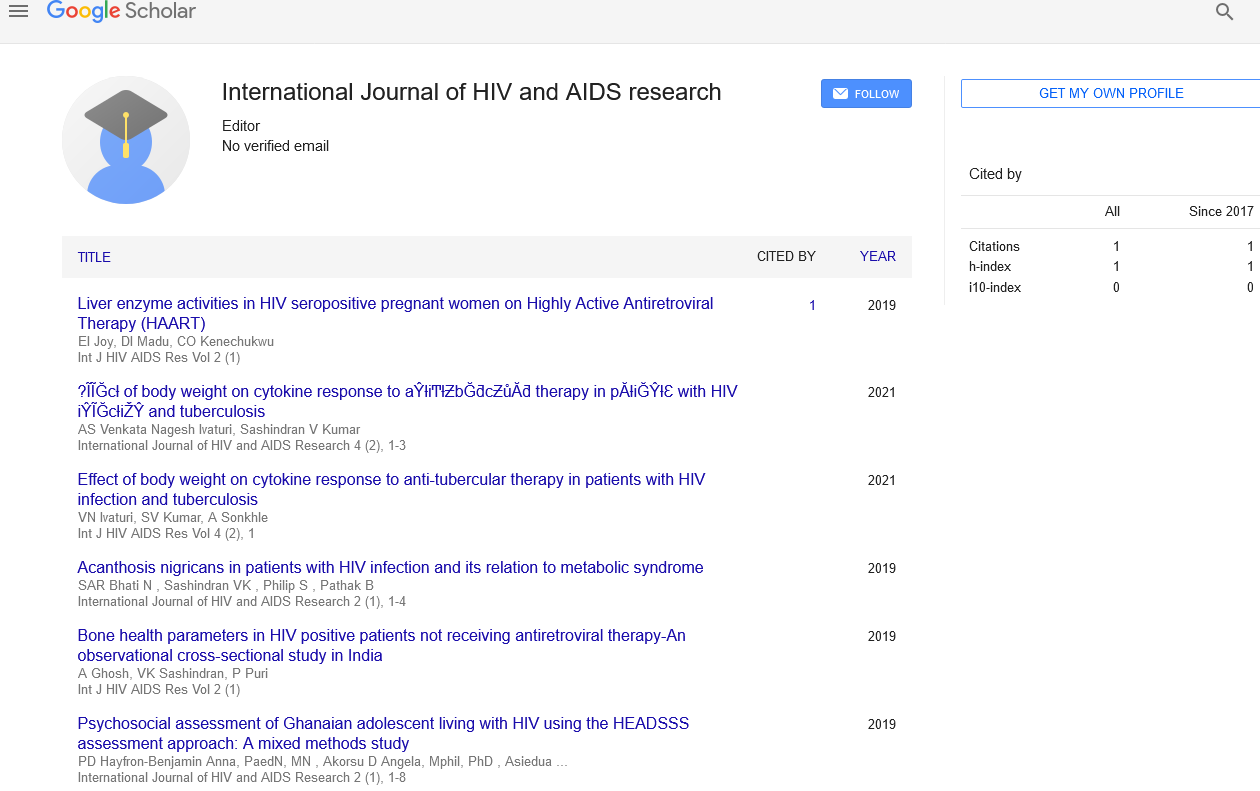
Sign up for email alert when new content gets added: Sign up
Abstract
Nutrition and Food Chemistry 2018: Lap-band weight loss surgery: The experiences of patients- Caroline Agbool- University of Johannesburg
Author(s): Caroline AgboolObesity has been identified as a international epidemic in evolved countries, with the US of America stated to have one of the maximum numbers of obese humans in the world. This epidemic has been observed to be a growing hassle that is experienced via developing countries, along with South Africa, too. South Africa is mentioned to have one of the maximum prevalence of obesity in Africa. One of the approaches that humans manipulate obesity is thru weight reduction surgery, also called bariatric surgical procedure. There are various forms of weight loss surgeries, but the attention of this paper is lap-band weight loss surgery. This paper seeks to study lap-band surgical operation from the views of the humans who have had the system in South Africa. Electronic documents are saved for all patients dealt with at SWLC, and those documents have been searched to pick out those who met the inclusion/exclusion criteria. Baseline demographic statistics such as age and sex (male/female) were accrued for those individuals, in addition to weights at baseline and at each go to for as much as 60 months following surgical procedure, as available. Given the retrospective nature of this study, patients were no longer observed up at pre-defined intervals however as an alternative at intervals primarily based on patient progress as described earlier. The main final results measures were percent weight reduction (WL) and extra weight loss (EWL). Percentage extra weight loss (%EWL) changed into calculated as weight loss divided with the aid of excess weight at baseline, with the quotient multiplied with the aid of 100: %EWL = (BMI at baseline−BMI at follow-up)/(BMI at baseline−ideal BMI) * 100, where perfect BMI is assumed to be 25 kg/m2. BMI turned into calculated as weight in kg/height in m2. As a part of the usual protocol at SWLC, all known headaches are recorded in our medical records. There have been no peri-operative deaths in this series. We have formerly posted a detailed document of the short-term headaches of LAGB at our center LAGB is reversible and widely recognized as a low threat weight reduction procedure.4 Nevertheless, complications do occur. Most problems are tool related, for example slippage of the band and port-related complications along with leaking. Other complications remain rare, but terrible adherence to dietary recommendation can lead to troubles, which includes esophagitis as well as nausea, vomiting, and, extra severely, pouch dilation.three In addition, the improvement of excess pores and skin after significant weight loss can also require further surgical procedure.five
Weight loss surgery effects in more marked and sustained weight loss than conservative treatment.1 Overall weight reduction is best at around 12 and 18 months,6 and a median reduction of 20–30 kg is maintained for up to 10 years.1 However, a few weight regain following bariatric surgical procedure is to be expected. It usually takes place about 2 years postoperatively and is estimated at approximately 15% of the maximum weight reduction.7 Failure to shed pounds is generally attributed to bad adherence to the postoperative diet.eight As time progresses, patients may be capable of eat greater, may start experimenting, and grazing can become common behaviour.nine Data exploration discovered a weight reduction pattern that elevated in a curvilinear pattern for approximately 2.5 years following implantation, at which time a plateau changed into reached. Therefore, a nonlinear random coefficients model become healthy the use of the NLMIXED Procedure of SAS/STAT version nine.2. [14] Models for weight loss and excess weight reduction have been fit separately. Linear and quadratic phrases for time (days after implantation) have been included in the version. We also examined the consequences of selected variables on weight loss: sex, baseline age, baseline BMI, baseline weight, and baseline excess weight. These variables and their interactions were tested as covariates inside the model. Akaike's facts criterion (AIC) and statistical significance (alpha = 0.05) had been used to decide the form of the very last models. Because blended modeling methods use all available information, no imputation for “missing” measurements changed into necessary. Complications and damaging events had been summarized with frequencies and percentages the usage of the whole cohort of sufferers. All calculations and analyses have been performed the usage of SAS/STAT version 9.2. Obese adults who undergo WLS stay longer than individuals who do no longer.10 The weight loss is also associated with significant upgrades in weight problems-related comorbidities, which includes type II diabetes, dyslipidaemia, hypertension, and obstructive sleep apnea. These situations are either resolved or their symptoms considerably reduced. Morbidly overweight sufferers, ≥16 years of age, who underwent LAGB surgical procedure on the Surgical Weight Loss Clinic in Ontario, Canada, among May 2005 and January 2011 had been eligible for this retrospective chart review. Electronic documents had been searched to become aware of all patients who met the inclusion/exclusion criteria Demographics, weights at baseline and follow-up visits (as much as 60 months following surgical treatment), and post-operative headaches




